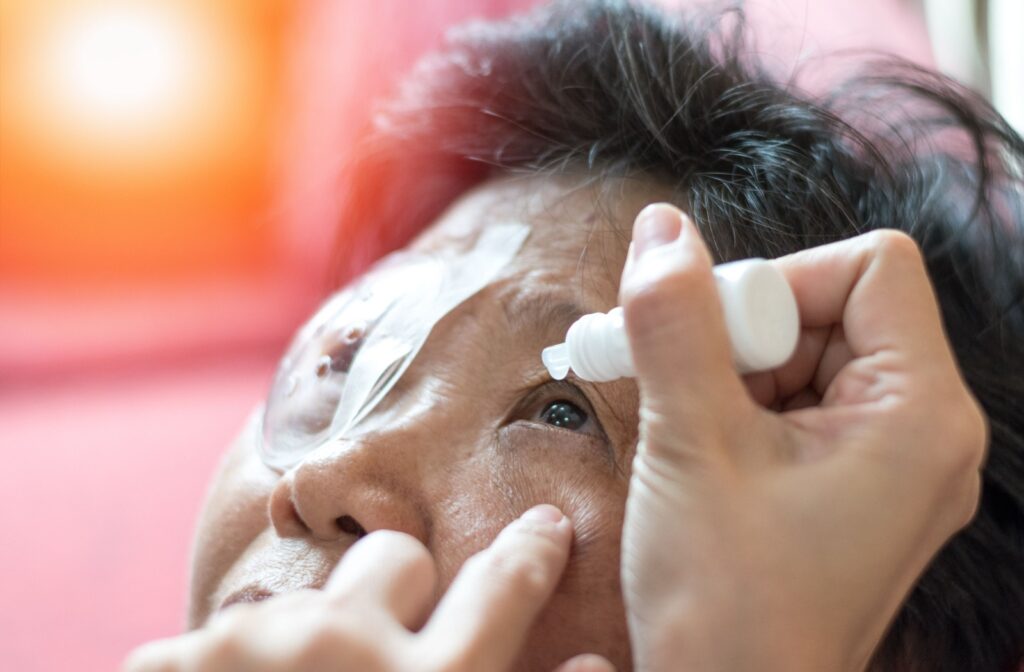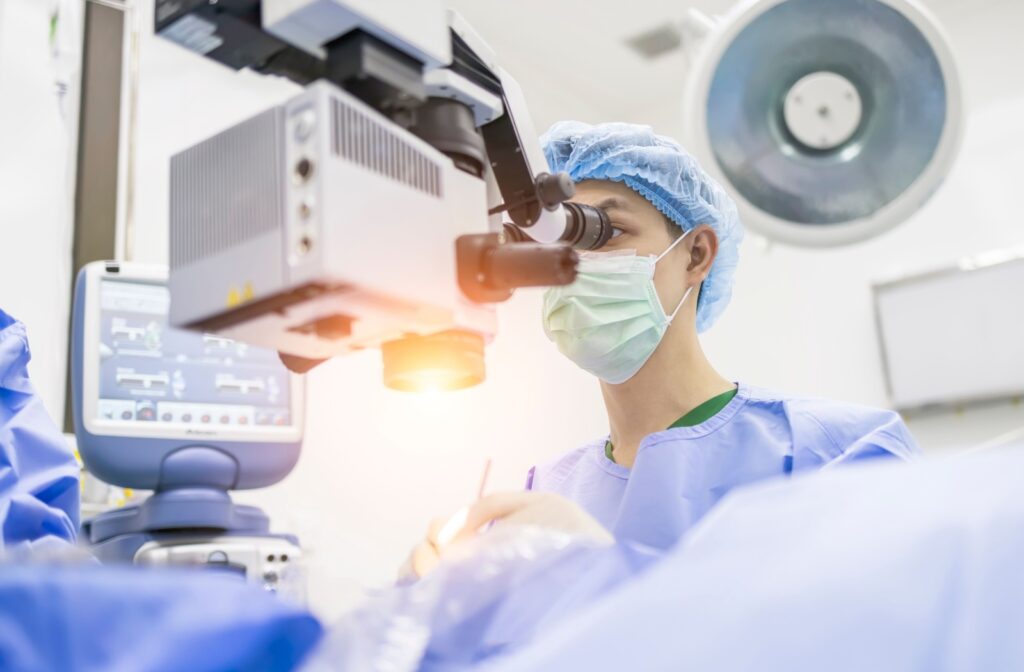Cataract surgery is a common procedure that involves removing the eye’s cloudy lens and replacing it with an artificial one. This surgery is usually performed on one eye at a time, with a gap between surgeries to allow for healing and recovery.
The American Academy of Ophthalmology (AAO) recommends waiting at least 1 week before scheduling surgery on the second eye. This allows for proper healing and evaluation of the first eye before proceeding to the second one. However, the exact timing between surgeries can vary depending on individual factors and your optometrist’s recommendations.
Factors Affecting Timing Between Surgeries
Several factors may influence how long you should wait between cataract surgeries. These may include:
- Health of the eyes: If both eyes have severe cataracts, your ophthalmologist may recommend a shorter gap between surgeries to improve your overall vision.
- Underlying health conditions: Some health conditions, such as diabetes or high blood pressure, may increase the risk of complications during surgery. Your ophthalmologist may suggest waiting longer between surgeries to allow for better management of these conditions.
- Type of lens used: Depending on the type of artificial lens used, your ophthalmologist may recommend a shorter or longer gap between surgeries. Some lenses require more time for proper healing and adjustment than others.
- Personal preference: Ultimately, the decision on how long to wait between cataract surgeries is often up to you. Your ophthalmologist will provide guidance based on medical factors, but it’s important to consider any personal preferences or concerns you may have as well.
Benefits of Surgery on One Eye at a Time
While some patients may prefer to have both eyes operated on at the same time, there are several benefits to waiting and having surgery on one eye at a time. These include:
- Reduced risk of complications: Having surgery on one eye at a time allows for proper healing and evaluation before proceeding to the second eye, reducing the overall risk of complications.
- Better assessment of results: By waiting between surgeries, your ophthalmologist can better assess the results of the first surgery before making any changes to the second eye. This can help produce optimal vision in both eyes.
- Easier adjustment: Having surgery on one eye at a time allows for easier adjustment and adaptation to the new artificial lens. This can also help with overall visual satisfaction.
- More manageable recovery: Recovering from cataract surgery can be physically and emotionally taxing. Having a gap between surgeries can allow for a more manageable recovery process.

What to Expect During the Recovery Period
After cataract surgery, following your eye doctor’s instructions for proper recovery is important. This may include:
- Wearing an eye patch or protective shield for a few days after surgery.
- Using prescribed eye drops to prevent infection and promote healing.
- Avoiding strenuous activities, heavy lifting, and bending over for the first week after surgery.
- Attending follow-up appointments with your eye doctor to monitor healing and vision changes.
It’s also important to be aware of potential complications during recovery, such as infection, bleeding, or increased eye pressure. If you experience any concerning symptoms, contact your ophthalmologist or optometrist immediately.
In most cases, patients can resume normal activities within a few days after surgery. However, it may take several weeks for vision to stabilize fully and for the eyes to adjust to the new artificial lens.
During this time, it’s important to continue practicing good eye health habits, such as wearing sunglasses and protecting your eyes from bright lights or debris. It’s also recommended to avoid rubbing or putting pressure on the eyes.
With proper care during recovery, most patients experience significant improvement in vision and a better quality of life after cataract surgery. Remember to follow all post-operative instructions closely and communicate concerns with your eye doctor. They will guide you through recovery and help provide optimal healing and vision outcomes. It’s important to be patient with the recovery process and allow yourself time to heal fully. Your eye health is worth the wait!
Clearer Vision Ahead
Cataract surgery is a common and highly successful procedure that can greatly improve vision for those suffering from cataracts. It’s important to understand the risks and benefits of the surgery and carefully follow post-operative care instructions for optimal healing and vision outcomes.
At Total Vision Little Tokyo, our team is dedicated to providing the best care for cataract patients. Please contact us if you have any concerns or questions about cataract surgery. We are here to support you every step of the way on your journey to a better vision. If you or a loved one is considering cataract surgery, schedule a consultation with us today and take the first step towards clearer, healthier vision.



